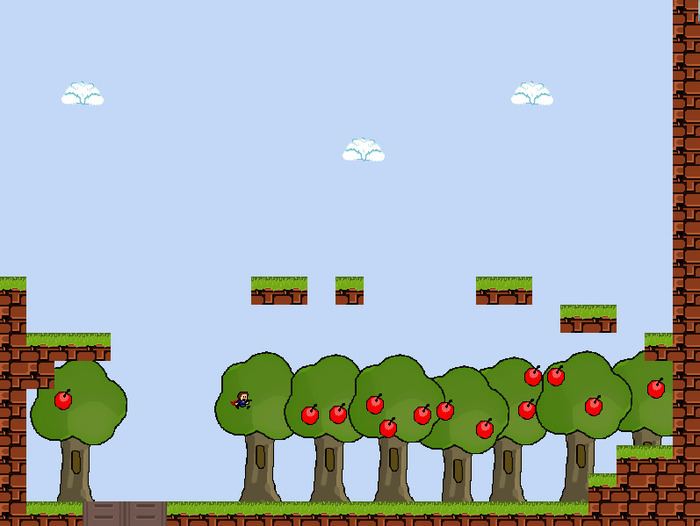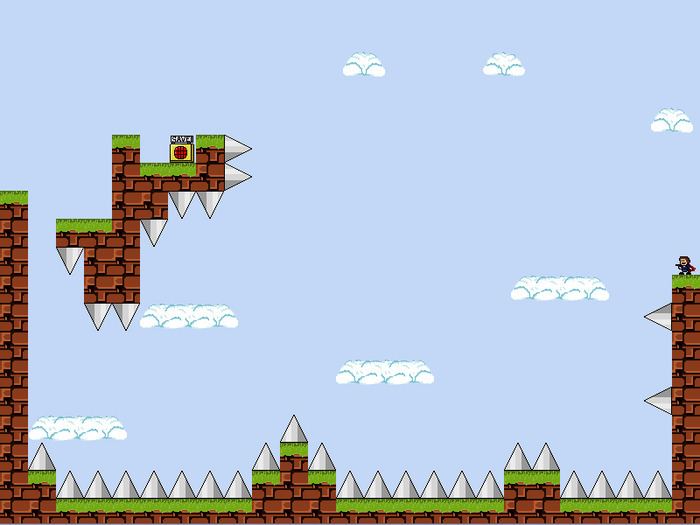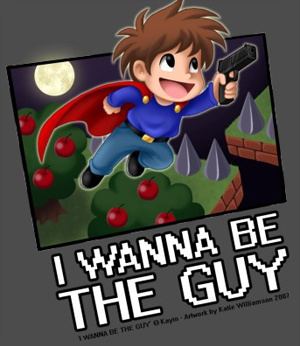7.4 /10 1 Votes
4/5 A10 Initial release date 5 October 2007 | 3.4/5 Kongregate Engine Multimedia Fusion 2 | |||||||||||||||||||||||||||||||||
 | ||||||||||||||||||||||||||||||||||
Publisher(s) Independent video game development Designer(s) Michael "Kayin" O'Reilly Programmer(s) Michael "Kayin" O'Reilly Similar I Wanna Be the Boshy, Syobon Action, Super Meat Boy, Donkey Kong '94, VVVVVV | ||||||||||||||||||||||||||||||||||
I wanna be the guy speed run 0 35 27 by tenshotstv agdq 2014
I Wanna Be the Guy: The Movie: The Game (IWBTG) is a 2D platform indie freeware video game created by Michael "Kayin" O'Reilly for Microsoft Windows using Multimedia Fusion 2. First released on October 5, 2007, the game is not in active development despite being listed as a beta, though the game's source code was released by Kayin four years later. IWBTG is mostly known for its unusually difficult platforming elements, unorthodox level design, and its utilization of sound effects, characters and music from many other games.
Contents
- I wanna be the guy speed run 0 35 27 by tenshotstv agdq 2014
- I wanna be the guy complete run part 1 of 5
- Gameplay
- Plot
- Development
- Spin offs
- References

I wanna be the guy complete run part 1 of 5
Gameplay

The player controls "The Kid". The controls are limited to left/right movement, jumping, double-jumping and shooting. IWBTG is made up of several stages split into many screens, which are mostly pastiches of Nintendo Entertainment System games, such as Tetris, Ghosts 'n Goblins, The Legend of Zelda, Castlevania, Mega Man, and Metroid. At the end of each stage, a boss must be defeated to progress. The first seven bosses (Mike Tyson; Mecha Birdo; Dracula; Kraidgief (a parody of palette-hacked character glitches); Mother Brain; Bowser, Wart, and Dr. Wily in the Koopa Klown Kar; and a mix between the Mecha Dragon from Mega Man 2 and the Yellow Devil from Mega Man and Mega Man 3) are adapted from classic games, mostly platformers, but their behavior and appearance have been modified and enhanced for IWBTG. The final boss, The Kid's father, is unique to IWBTG. The game parodies many 8-bit and 16-bit era video games, such as the frequent use of references and sound effects from the Nintendo game Mario Paint.

IWBTG is most famous for its difficulty. Most of the landscape is engineered specifically to kill the player character. Alongside a traditional range of recognizable dangers, such as spikes and pits, there are many less obvious threats as well, most of which are all but impossible to avoid without either previous knowledge or trial and error (such as Tetris pieces and "Delicious Fruit", which can fall downwards, upwards, or sideways). The Kid always dies with a single hit, at which point he explodes into a mass of blood. Although each death results in a "Game Over", the player is allowed an infinite number of attempts. From the starting screen, there are three different ways to progress; all of them ultimately lead to the same warp screen which returns to the first screen. Thus, to complete the game, the first six bosses along each path must be defeated before the warp screen will allow the player to access the final area.
The game has four difficulty settings: "Medium", "Hard", "Very Hard", and "Impossible", with "Hard" considered to be the "normal difficulty". The only difference between the difficulty settings is the number of save points available throughout the game, from 62, 41, 22 to none at all. Also, while playing on Medium mode, The Kid's hair has a pink bow in it, and any save points exclusive to Medium difficulty are labeled "WUSS" instead of "SAVE".
Plot
Like many games that I Wanna Be the Guy parodies, the game's plot is straightforward and does not heavily impact gameplay. The player controls "The Kid", who is on a mission to become "The Guy". The entirety of the plot is given in a message during the opening credits, a parody of bad Japanese translations and broken English in early Nintendo Entertainment System games.
Development
The game is an adventure platform game and designed in the style of 8-bit video games. Kayin describes the game as "a sardonic loveletter to the halcyon days of early American video gaming, packaged as a nail-rippingly difficult platform adventure". The inspiration came from a challenging Japanese Flash game on 2channel called The Big Adventure of Owata's Life (人生オワタ\(^o^)/の大冒険, Jinsei Owata no Daibōken), which Kayin played and thought he could outdo in terms of difficulty.
On November 9, 2011 Kayin released the source code of the game under his own software license (forbidding new content) so that the game's community would be able to create fixes and patches.
Spin-offs
Two months after the release of IWBTG, Kayin announced a prequel titled I Wanna Save the Kids. IWSTK features "The Kid" escorting children back to their home. On the way, The Kid has to save these kids and himself from various dangers, as well as bringing them to the next level. The game closely parallels the classic computer game Lemmings, while still maintaining the notorious difficulty of IWBTG. The game is no longer in development, although a demo is available.
After the success of fighting game competitor Ari "Floe" Weintraub streaming his playthroughs of IWBTG and multiple fan spin-offs, Kayin announced another spin-off to IWBTG on June 26, 2012 titled I Wanna Be the Guy: Gaiden. Planned as an episodic series, IWBTG:G has "The Lad" trying to find "The Kid" after his ascent to Guy-dom. The first act was first featured in the 2012 iteration of the Evolution Fighting Game Tournament with Floe playing.
